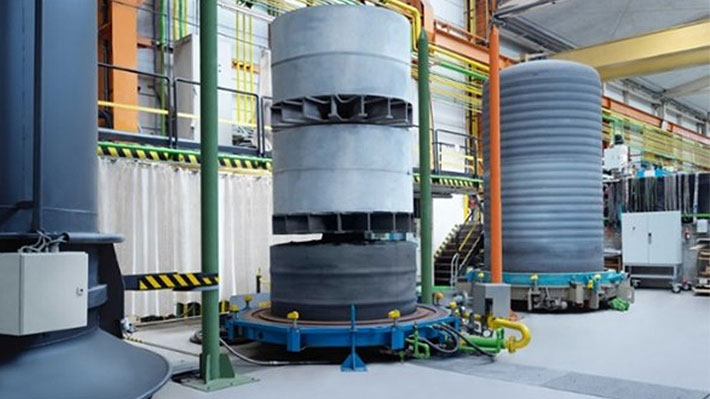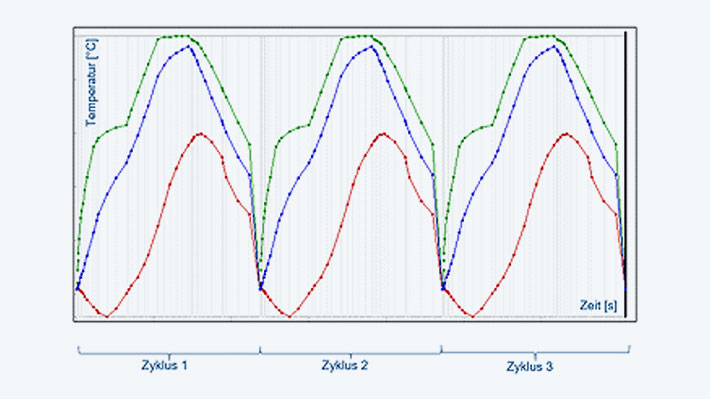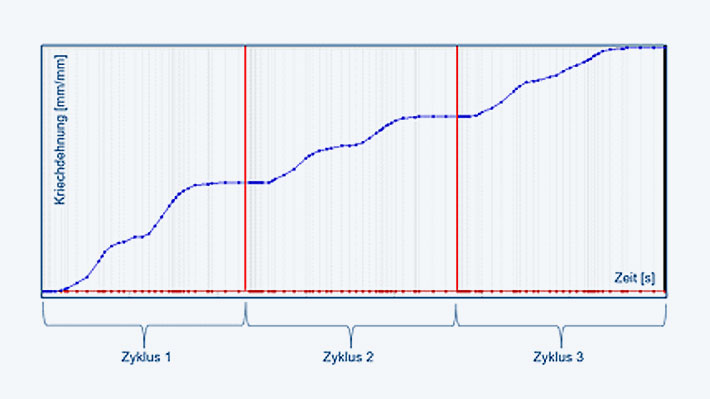Temperature-influenced thermo-mechanical life cycle analysis of a support structure
Sector: Machinery and plant engineering, Steel and metal productionSpecialist field: Heat Transfer, Structural mechanicsThe furnaces of EBNER are developed, among other things, for the heat treatment of semi-finished metal products (steel wires, strips, blanks). Due to the complex thermo-mechanical load, simulations were carried out, which took creep processes into account, in order to evaluate the life cycle prior to the production of a real prototype.
Summary
Task
The support structures for holding the semi-finished products in the furnace systems are exposed to the high temperatures, allowing creep processes with plastic deformations to occur. Due to the complex thermo-mechanical load, Ansys Mechanical was used to evaluate the life cycle prior to the production of a real prototype.
Solution
The calculation in Ansys Mechanical was performed using a one-way coupling of a temperature field and a structural analysis, taking into account three full thermal cycles (heating and cooling processes). Due to the high thermal mass of the system and the occurrence of temperature jumps, a transient temperature field analysis was performed.
Customer benefits
The options implemented in Ansys Workbench for taking creep processes into account, as well as the definition of temperature-dependent material properties and also the simple coupling options, form the basis for solving this problem. This leads to cost and time savings in the development of the industrial furnaces.
Project Details
Task
The support structures for holding the semi-finished products in the furnaces are exposed to the high temperatures. As a result, creep processes can occur. These plastic (irreversible) deformations have a major influence on the life cycle of the support structures, especially in the case of extensive heat treatment processes with high temperature differences, which include cyclic heating and cooling processes lasting several hours.
Due to the complex thermo-mechanical load, Ansys Mechanical was used to evaluate the life cycle prior to the production of a real prototype. The aim of the calculations was to determine the cyclic thermo-mechanical influence on the life cycle of the support structure based on the creep processes that occur.

Customer Benefit
The options implemented in Ansys Workbench for taking creep processes into account, as well as the definition of temperature-dependent material properties and also the simple coupling options, form the basis for solving this problem. This results in considerable cost and time savings in the development of heat treatment furnaces. This not only includes the reduced number of prototypes required, but also the minimization of necessary test runs. If the simulation models are validated and refined through trials, confidence in the results can continue to grow. In addition, a simulation model highlights potential problem areas due to the interplay between high temperature gradients, creep effects and frictional contacts. The knowledge gained about the behavior of the support structures in the furnace is an important basis for the development of future plants and thus a decisive competitive advantage.

Solution
The calculation in Ansys Mechanical was performed using a one-way coupling of a temperature field and a structural analysis, taking into account three full thermal cycles (heating and cooling processes). Due to the high thermal mass of the system and the occurrence of temperature jumps, a transient temperature field analysis was performed (see Fig. 2). The temporal changes of the state variables are also taken into account. A temperature curve generated from empirical values served as the energy input to the support structure and the semi-finished products. Thermal material properties were given as a function of temperature - the temperature jumps provide strongly fluctuating properties.
Using mapping methods, the resulting inhomogeneous temperature fields were transferred to the static structural analysis in the second step. The transfer was performed in several load steps specifically at times of critical thermal gradients. In addition to the temperature-dependent stiffness properties, a creep law was also defined to model secondary creep effects using known creep and fracture tests.
The cumulative creep strain over all three load cycles shown in Fig. 3 was now compared with the critical creep strain. From this, a maximum number of cycles could be calculated.

Images: © EBNER




